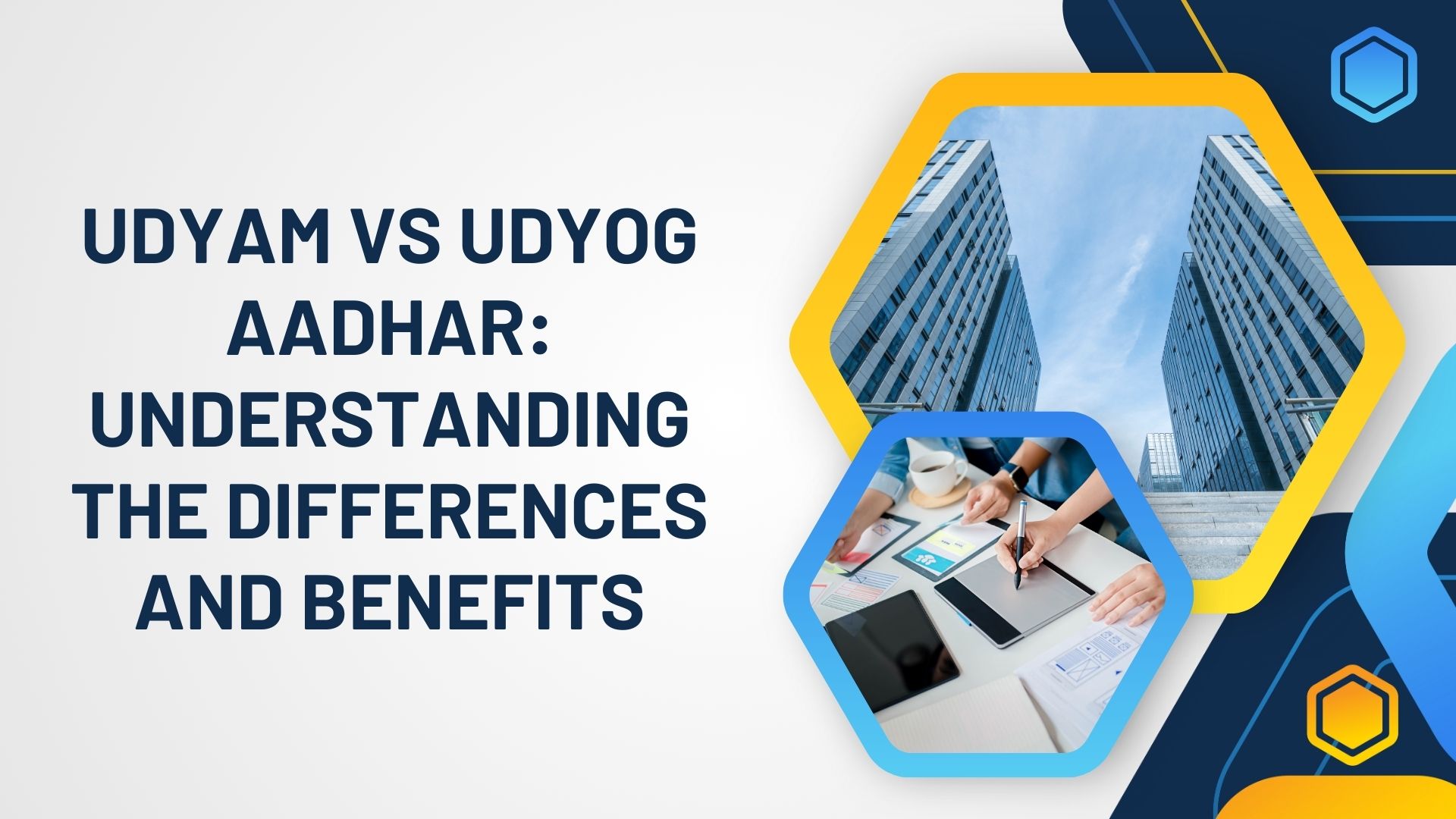In the vast landscape of Indian business, understanding the nuances of government schemes and registrations is crucial for entrepreneurs aiming to navigate regulatory frameworks efficiently. Two such schemes, Udyam Registration, and Udyog Aadhar, often spark confusion among business owners due to their similar objectives but distinct features. Let’s delve into the disparities and advantages of each to shed light on which might be the better fit for your enterprise.
Udyam Registration:
-
Definition: Udyam Registration is a government initiative introduced by the Ministry of Micro, Small, and Medium Enterprises (MSME) in July 2020. Its primary objective is to streamline the registration process for micro, small, and medium-sized enterprises (MSMEs) in India.
-
Eligibility Criteria: Any business entity falling under the definition of MSME as per the Micro, Small, and Medium Enterprises Development Act, 2006 can apply for Udyam Registration. The classification is based on investment in plant and machinery or equipment and turnover.
-
Registration Process: The registration process for Udyam is entirely online through the official Udyam Registration portal. Enterprises are required to provide details such as Aadhar number, PAN card details, business address, and other relevant information.
Benefits:
-
Avail government schemes and incentives for MSMEs.
-
Access to credit facilities and subsidies.
-
Preference in government procurements.
-
Easier access to loans with lower interest rates.
-
Facilitates the ease of doing business by eliminating red tape.
Udyog Aadhar:
-
Definition: Udyog Aadhar is an Aadhar-based registration system introduced by the Indian government to simplify the registration process for MSMEs and provide them with various benefits and subsidies.
-
Eligibility Criteria: Similar to Udyam Registration, any business entity meeting the definition of MSME under the MSMED Act, 2006, is eligible to apply for Udyog Aadhar. The classification criteria are also based on investment and turnover.
-
Registration Process: Registration for Udyog Aadhar can be done online through the official Udyog Aadhar portal using Aadhar card details and other requisite business information.
Benefits:
-
Eligibility for government schemes and subsidies.
-
Preferential treatment in government procurements.
-
Easier access to credit and loans.
-
Exemption from certain taxes.
-
Simplified compliance procedures.
Understanding the Differences:
-
Nature of Registration: While both Udyam Registration and Udyog Aadhar serve the same purpose of providing benefits to MSMEs, Udyam Registration is the newer system introduced by the government to replace the earlier Udyog Aadhar registration system.
-
Documentation: Udyam Registration requires additional documentation compared to Udyog Aadhar. However, it offers more comprehensive benefits and facilitates better compliance.
-
Validity: Udyam Registration has a validity period and needs to be renewed periodically, whereas Udyog Aadhar once obtained, is valid for a lifetime.
-
Scope of Benefits: While the benefits offered by both schemes are largely similar, Udyam Registration might offer a more robust framework for accessing government incentives and schemes due to its newer and more streamlined nature.
Choosing the Right Registration for Your Business:
-
Nature of Business Operations: Consider the nature of your business operations and the scale at which you operate. If your business falls under the MSME category and aims for expansion, Udyam Registration might be more suitable due to its comprehensive framework and eligibility for various government schemes.
-
Long-term Objectives: Evaluate your long-term objectives and growth plans for your business. Udyam Registration, with its periodic renewal requirement and potential for accessing a wider range of benefits, may align better with ambitious growth trajectories.
-
Extent of Benefits Desired: Assess the extent to which you wish to leverage government incentives and subsidies. While both Udyam Registration and Udyog Aadhar offer similar benefits, Udyam Registration might provide a more robust platform for accessing a broader spectrum of schemes and support mechanisms.
-
Consultation with Experts: If you’re uncertain about which registration option suits your business best, consider seeking advice from industry experts, consultants, or MSME facilitation centers. They can provide valuable insights tailored to your specific business needs and goals.
-
Keep Updated with Regulatory Changes: Stay informed about any updates or changes in government regulations about MSME registrations. This ensures that your business remains compliant and maximizes the benefits available under the chosen registration scheme.
-
Regular Compliance Checks: Once registered under either Udyam Registration or Udyog Aadhar, ensure timely compliance with renewal requirements, if applicable, and adhere to any regulatory obligations to continue enjoying the benefits offered by these schemes.
Note: Now print udyog aadhar certificate through the udyam portal.
Conclusion:
In the dynamic landscape of Indian business, navigating government regulations and leveraging available support mechanisms can significantly impact the growth and sustainability of MSMEs. Udyam Registration and Udyog Aadhar stand as pillars of support for businesses aiming to thrive in this ecosystem by providing access to incentives, subsidies, and preferential treatment in procurement processes.
Understanding the differences and benefits of these registration schemes is essential for entrepreneurs to make informed decisions aligned with their business objectives. Whether you opt for Udyam Registration or Udyog Aadhar, the key lies in leveraging these registrations strategically to propel your business forward and contribute to the thriving MSME sector in India.


